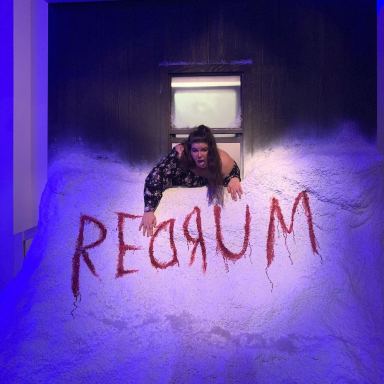43 Movie Facts and Hidden Details About ‘Taxi Driver’ (1976)
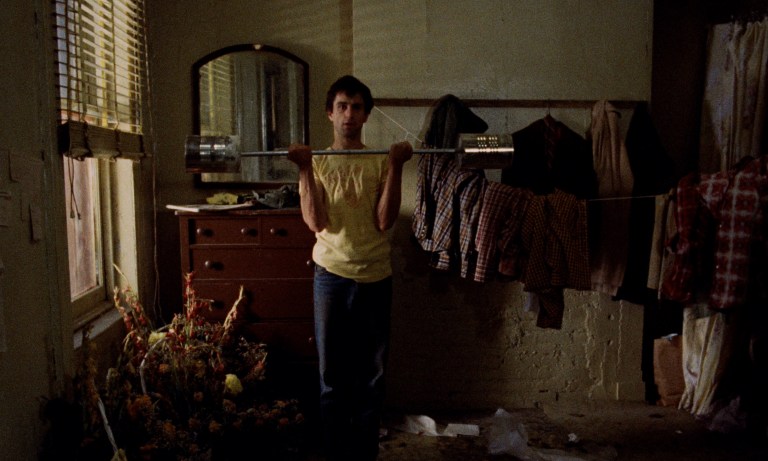
Martin Scorsese’s landmark 1976 vigilante movie Taxi Driver is a meditation on violence and isolation in mid-1970s New York City. Robert De Niro plays Travis Bickle, a mentally ill ex-Marine with extremely poor social skills whose desperation and loneliness grow throughout the film until he finds a purpose in life: violently rescuing a prepubescent NYC prostitute named Iris (Jodie Foster) from her pimp, “Sport” (Harvey Keitel).
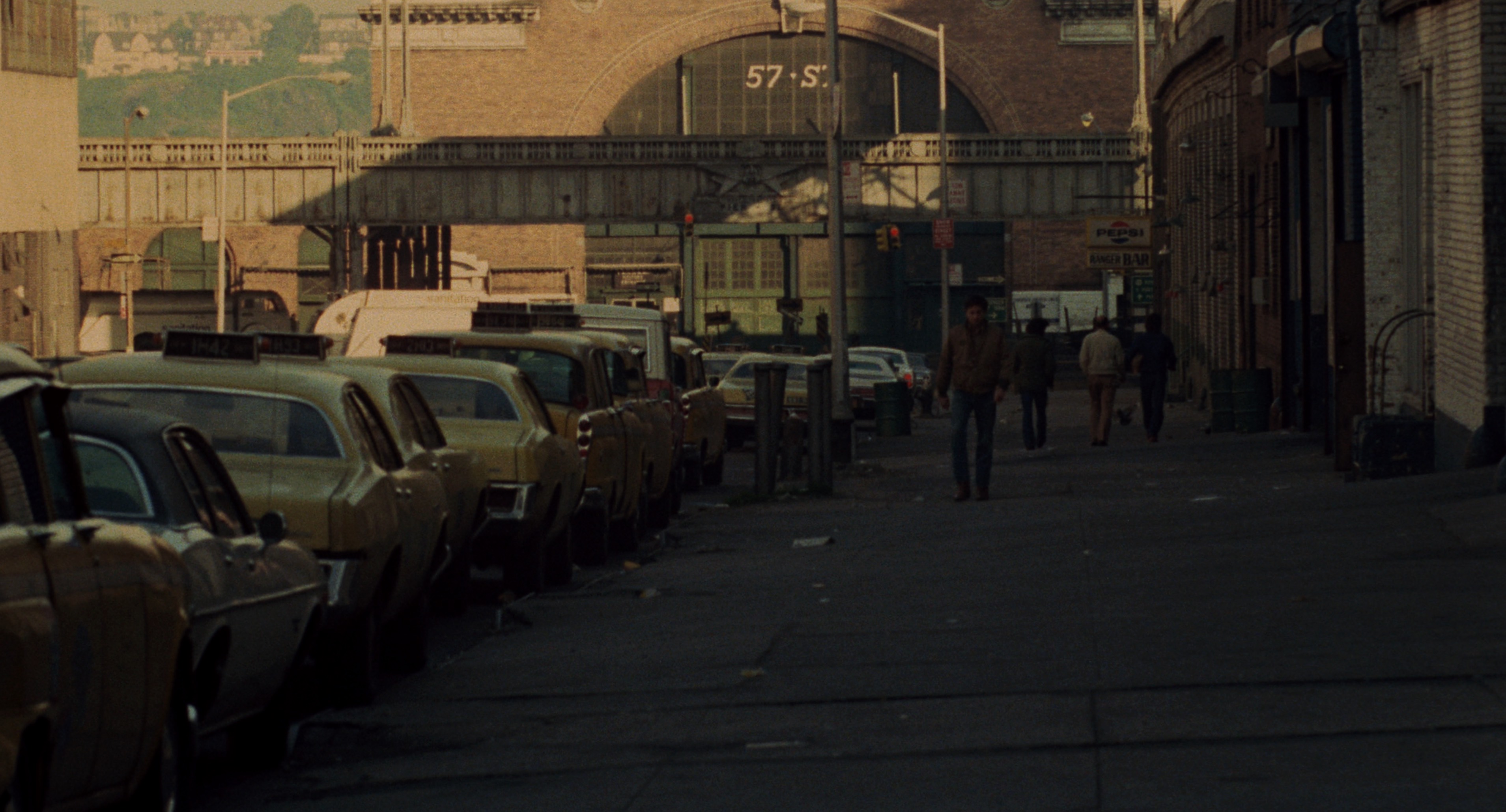
Shocking in its violence and nihilism and its portrayal of New York as a modern Sodom and Gomorrah, it was nominated for Best Picture at the Oscars but lost to Sylvester Stallone’s Rocky. Regardless, it is widely regarded as one of the best American films ever made, and being overlooked in favor of Rocky is considered one of the most egregious Oscars injustices of all time.
In many ways, the film was prophetic—Travis was the original “incel” who went on a murderous rampage against “degeneracy” due to his own inability to find a woman willing to be his partner.
Scorsese’s Taxi Driver, as well as his 1982 film The King of Comedy—starring De Niro as a lonely would-be standup comic who winds up kidnapping a famous talk-show host to force him to listen to his jokes—were both cited by director Todd Phillips as a direct inspiration for his 2019 film Joker, in which Joaquin Phoenix won an Oscar for playing a bullied incel who finally snaps.
Here are 43 trivia items about “the film that did for cabs what Jaws did for sharks.”
Travis Bickle (Robert De Niro)
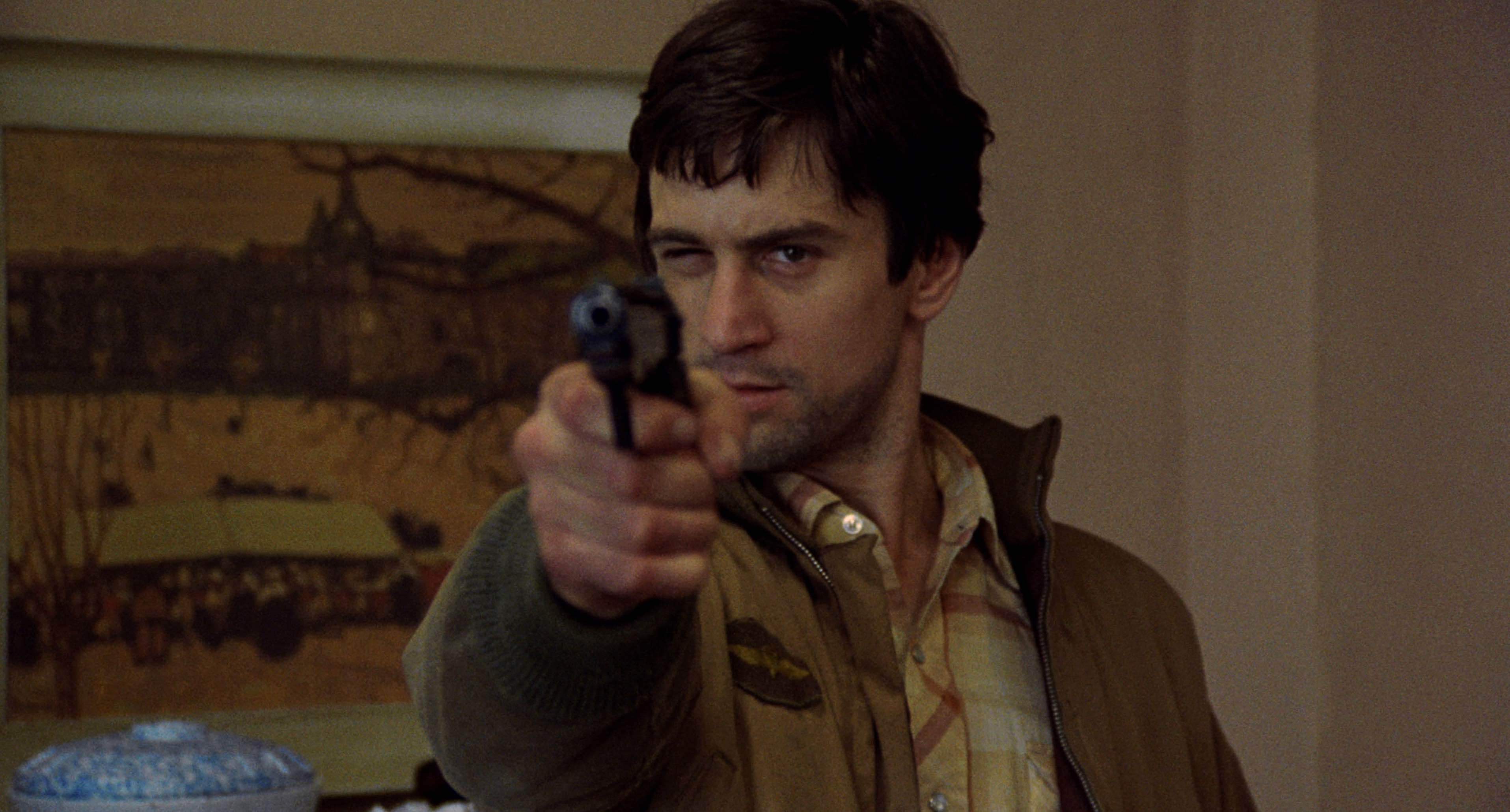
1. In the early 1970s before he became a Hollywood star, Robert De Niro had an idea for a movie “about a lonely man wandering New York City with guns and dreaming of an assassination.” A few years later, he discovered that Paul Schrader had written just such a script.
2. Shortly before he signed on to play the title character in Taxi Driver, Robert De Niro had broken out as a film star by winning the Best Supporting Actor Oscar for Godfather II (1974). He was being offered a half-million dollars to play other roles, but he accepted a mere $35,000 to play Travis Bickle, and he accepted.
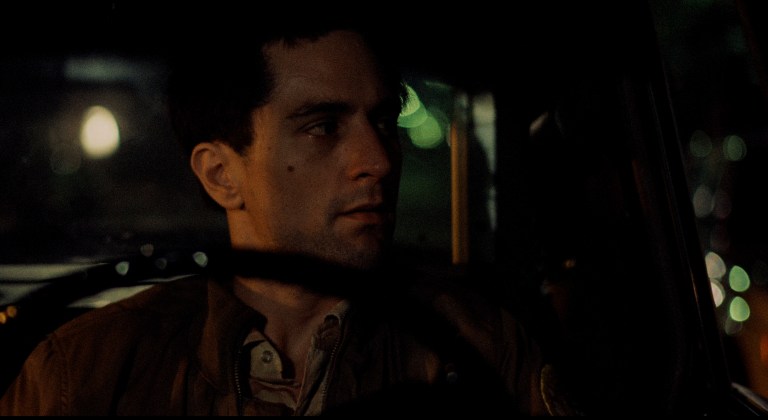
3. The quintessential method actor, Robert De Niro got a real New York City cab license and worked about fifteen hours a day for a month to get a sense of the job.
4. During the time he was actually working as a cabdriver, De Niro was only recognized once, despite the fact that he had just won an Oscar. He says the only person who recognized him was a young actor who exclaimed, “You just won an Oscar….My God, is it THAT hard to get work?”
5. De Niro also stayed in character as Travis throughout the film’s production. The only thing about his performance that wasn’t entirely authentic was the rubber “bald wig” the makeup team glued around his “Mohawk” haircut toward the film’s end as his sanity unspools.
6. The idea for the Mohawk came from a military friend of Martin Scorsese’s who told him that the distinctive hairdo was being worn by American soldiers in Vietnam who were preparing for especially dangerous missions.
7. Other actors considered for the role of Travis: Jack Nicholson, Dustin Hoffman, Warren Beatty, Burt Reynolds, Ryan O’Neal, Peter Fonda, Jon Voight, Al Pacino, David Carradine, Robert Blake, Richard Dreyfuss, Alain Delon, Christopher Walken, James Caan, Roy Scheider, Paul Newman, Martin Sheen, Neil Diamond, Marlon Brando, Elliott Gould, Alan Alda, George Hamilton, and Jeff Bridges—the last of whom was Scorsese’s original choice.

8. The iconic scene where Travis stares in the mirror and keeps repeating the line “You talkin’ to me?” was entirely ad-libbed. The only instruction in the screenplay was “Travis looks in the mirror.”
9. According to director Martin Scorsese, the idea to talk in the mirror came from a scene where Marlon Brando stares in the mirror and mouths words in the 1967 film Reflections in a Golden Eye.
10. De Niro, however, claims he got the idea after watching Bruce Springsteen talk to his audience in the early 1970s.
11. It’s also been speculated that De Niro was inspired to keep repeating the phrase “You talkin’ to me?” in different intonations as a result of his training under famous acting teacher Stella Adler, who encouraged her students to practice enunciating their lines in a wide array of inflections.
12. The fact that De Niro is talking to himself in the mirror only underlines his loneliness.
13. Although notorious New York City serial killer David “Son of Sam” Berkowitz had already committed a few stabbings and an act of arson before Taxi Driver was released in February of 1976, his story would mirror Travis Bickle’s in several uncanny ways. They were both mentally disturbed former soldiers who felt that New York City was a cesspit of degeneracy. They were both insomniacs. Both of them used .44-caliber pistols in their shootings. Finally, Berkowitz worked as a cabdriver for a brief time before he became a postal worker. It has not been confirmed whether Berkowitz ever saw Taxi Driver.
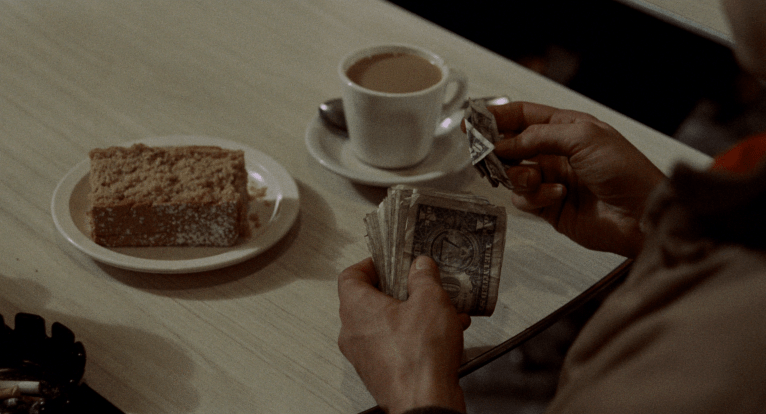
Cabbies talk business at the Belmore Café in lower Manhattan.
14. In the excruciatingly awkward lunch date where Betsy (Cybill Shepherd) and Travis have coffee and pie in a diner, Travis orders “a piece of hot apple pie with a slice of melted yellow cheese.” When Wisconsin serial killer Ed Gein was arrested, he agreed to offer a full confession so long as the police provided him with a piece of hot apple pie with a slice of melted yellow cheese.
15. Taxi Driver was the second of four films in which Robert De Niro would play a Vietnam veteran. The first was Hi, Mom! (1970). The other two were The Deer Hunter (1978) and Jacknife (1989).
Iris Steensma (Jodie Foster)
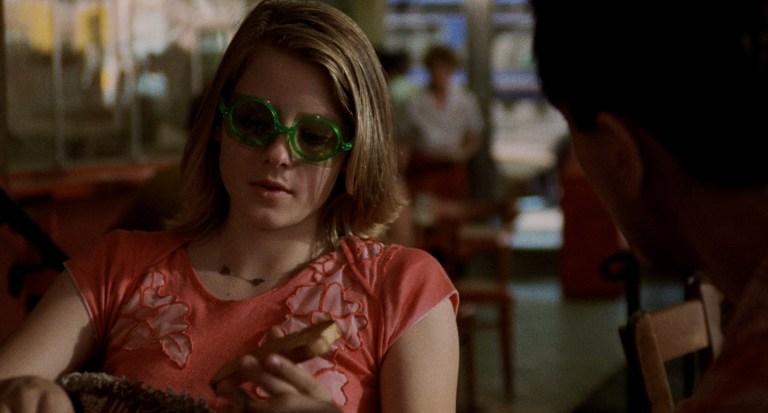
16. Actress Jodie Foster was only 12 years old when she played the role of Iris Steensma, the barely pubescent prostitute that Travis attempts to rescue from her pimp (Harvey Keitel).
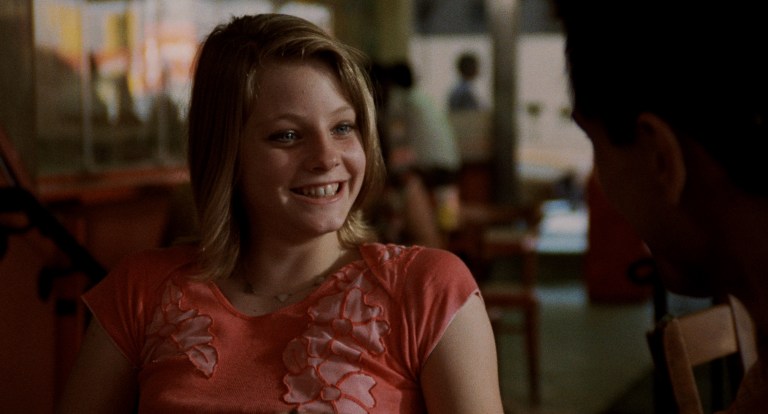
17. Before she was allowed to take the role, Foster had to undergo counseling to determine whether someone so young was able to cope with it.
18. Ironically, since the film was rated “R,” Foster was too young to see it in theaters unless accompanied by a parent or adult guardian.
19. The more explicit scenes featuring Iris were filmed by Jodie Foster’s sister, Connie, who was 19 at the time of filming.
20. Other actresses considered for the role of Iris: Melanie Griffith, Linda Blair, Ellen Barkin, Kim Basinger, Geena Davis, Michelle Pfeiffer, Debra Winger, Carrie Fisher, Mariel Hemingway, Bo Derek, Kim Cattrall, Rosanna Arquette, Kristy McNichol, and Brooke Shields.

21. Foster claims that Robert De Niro would often call her and offer to take her out for coffee so they could rehearse their lines. Foster says she quickly got bored of the rehearsals, but De Niro persisted. Decades later, while accepting a lifetime achievement award, Foster thanked De Niro with teaching her how to integrate improvised lines with those in the script.
22. In a disturbing example of life imitating the movies, John Hinckley, Jr. was a mentally disturbed man who grew obsessed with Jodie Foster, especially in the role of Iris. He stalked her while she went to college at Yale. On March 30, 1981, Hinckley attempted to assassinate President Ronald Reagan in an attempt to impress Foster. The entire plot comes full circle from real life…to film…and back to real life when one considers that writer Paul Schrader was partially inspired to write the screenplay after a loner named Arthur Bremer shot presidential candidate George Wallace in 1972. And in Taxi Driver, Travis attempts to shoot a presidential candidate named Charles Palatine.
Director Martin Scorsese
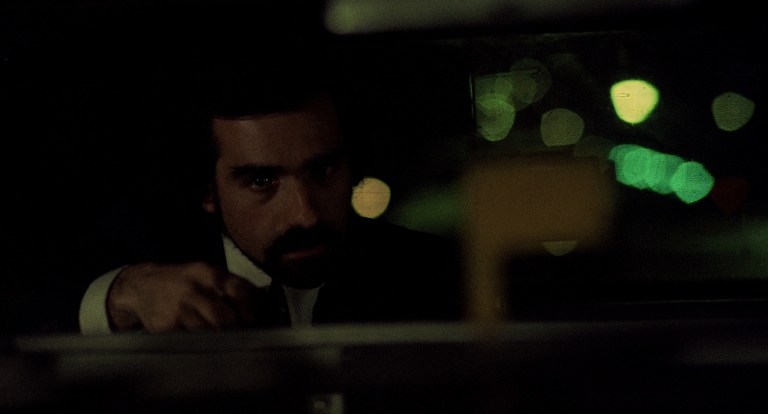
23. Martin Scorsese appears in two separate cameos. In one scene, he plays a very disturbed passenger who makes Travis park in front of an apartment building and then admits he is furious that his wife is inside the building having sex with a black man. The actor who was originally cast to play the part had to back out due to injuries he sustained while shooting another film. Scorsese, who is only 5’4”, says that he had to sit on a blanket in the backseat in order for his face to be seen over the front seat.
24. In a wordless and uncredited cameo, Scorsese can be briefly glimpsed in the scene where Betsy is leaving her office in slow-motion and Scorsese is seen sitting by the front door.
25. The film’s original ending was so violent that the MPAA threatened to give it an “X” rating, which would have confined its distribution to porno theaters. As rumor has it, Scorsese stayed up all night drinking with a loaded gun in his hand, fully intending to shoot an executive at Columbia Pictures in the morning. Ultimately, the only change he made to the film that allowed it to slip through with an “R” rating was to mute the colors in the blood-soaked finale.
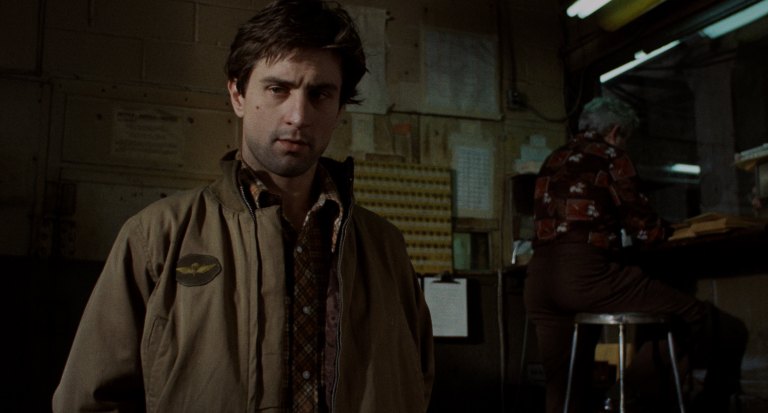
Travis Bickle is a lonely Vietnam vet set adrift in the violent madness of mid-1970s New York City.
26. Throughout the film, Travis Bickle wears an olive-drab Army jacket with a large patch of King Kong on one of the arms. Scorsese says the patch was a reference to the 1933 film King Kong, in which a confused and violent giant gorilla seeks to rescue a fair maiden. It was meant to symbolize Travis’s attempts to save Iris.
27. Scorsese and screenwriter Paul Schrader also say that an inspiration for the film was John Ford’s classic The Searchers (1956), in which John Wayne attempts to rescue a woman who has been kidnapped by a Native American tribe.
28. Scorsese has said that the most significant shot in the film is the one in which Travis is standing in a phone booth in the lobby of his apartment building trying to contact Betsy, when suddenly the camera shifts away from the phone booth and toward an empty hallway while he continues pleading with Betsy on the phone. The shot was meant to symbolize Travis’s crippling loneliness.
29. Director Oliver Stone, who was studying filmmaking under Scorsese at NYU film school at the time, says he suspects he was a partial inspiration for Travis’s character, as he was a Vietnam vet who worked as an NYC cabdriver and wore his olive-drab Army jacket while on the job.
30. The character of “Easy Andy”—the fast-talking contraband peddler who takes Travis to a motel room and shows him a wide array of firearms for sale—is played by Scorsese’s friend Steven Prince, a colorful personality about whom Scorsese made a documentary that has never been released.
Paul Schrader (Screenwriter)
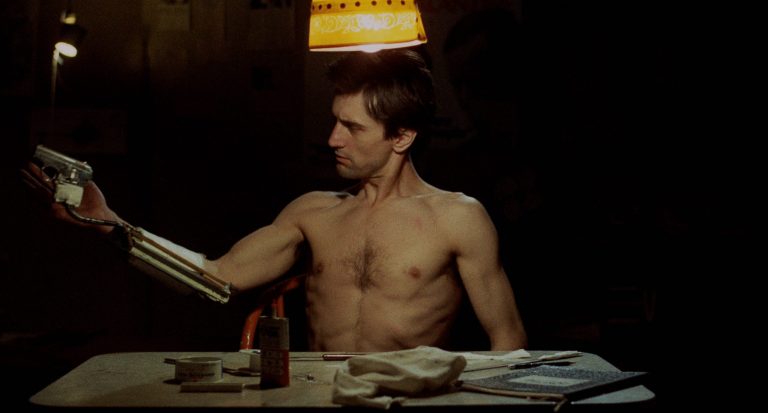
31. Screenwriter Paul Schrader has based his entire career on themes of male violence and frustrated machismo. He says he was partially inspired to write Taxi Driver after reading the diaries of Arthur Bremer, a deranged incel who shot presidential candidate George Wallace in 1972.
32. Schrader also says the popular Harry Chapin song “Taxi” (1972), about a brooding and lonely taxi driver, might have also been an inspiration.
33. The script was also biographical, though, as Schrader had endured a nervous breakdown in LA after being divorced, fired from the American Film Institute, and dumped by a new girlfriend within a brief span of time. He says he didn’t speak to anyone for a few months, became fixated on guns, and attended porno theaters.
34. While writing the script, Schrader at first thought the main theme was loneliness, but as time went on, he realized he was writing about how some young men, including himself, will push others away to maintain their loneliness despite it being the main source of their agony.
35. Schrader says that he made Travis a heroic celebrity at the film’s end as a comment on the case of Sara Jane Moore, who briefly savored the spotlight after attempting to kill President Gerald Ford.

36. Paul Schrader originally wrote Travis as a racist who only killed black men. Upon Scorsese’s advice, he changed the script so that all the villains were white men.
37. Bickle’s character was written as a Vietnam veteran because at the time of filming, America had just withdrawn from Vietnam, suffering its first-ever military loss and leaving a nation shocked and traumatized by pointless violence.
38. In the original screenplay, Schrader had named Iris “Garth.” He rewrote the character after winding up with an underage prostitute. He allegedly sent Martin Scorsese a note saying, “Iris is in my room. We’re having breakfast at nine. Will you please join us?”
Miscellaneous Trivia

39. Taxi Driver would be the final film from Columbia Pictures to feature the Torch Lady logo in the intro.
40. Scorsese originally contacted legendary film composer Bernard Herrmann—whose first soundtrack was for Citizen Kane (1941) and has scored several timeless soundtracks such as Psycho (1960) and Vertigo (1958). At first Herrmann refused, saying he didn’t like movies about cars, but after reading the script, he accepted. In his 70s and already suffering from severe heart disease, Herrmann composed a striking and atonal soundtrack. Too ill to conduct the orchestra himself, he directed from behind a glass booth on December 22 and 23, 1975. The morning of December 24, only hours after recording finished, he died.
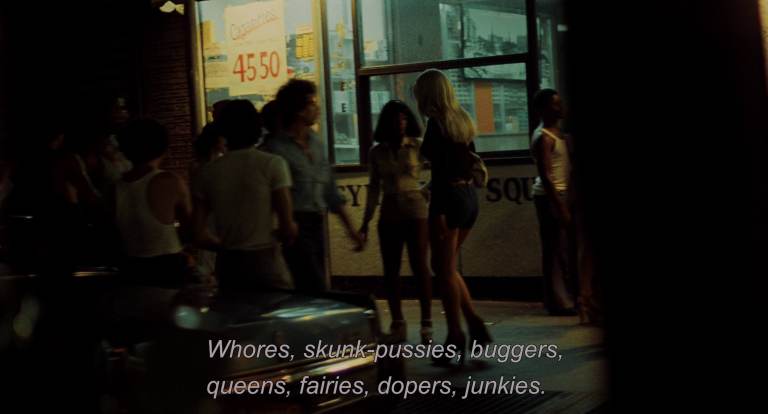
41. Taxi Driver was shot in 1975 during a blisteringly hot NYC summer in the midst of a garbage strike, which is why trash is piled up on city streets throughout the film.
42. The restaurant where cabbies convene to eat was a real cabdriver hangout called the Belmore Café in lower Manhattan.
43. During Taxi Driver’s premiere at Cannes, several audience members booed.
